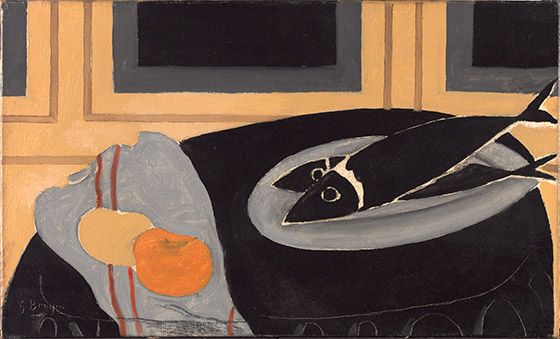Varengeville, Vanitas, Interiors, Studies
The break-out of war saw Braque take refuge in Varengeville-sur-Mer, which became an important artists’ colony in the thirties where Braque had a workshop built by the North American architect, Paul Nelson. Later, during the Nazi Occupation and the Vichy Government, he spent a short period in Limousin and again near Toulouse before finally moving into his Paris workshop until the end of the Occupation, occasionally returning to Varengeville. He admits to being “highly sensitive to the surrounding atmosphere”, prompting him to produce dark and painful works. Skulls flanked by crucifixes and rosaries or the typical fish found in Christian iconography are images of the misfortunes of war. The silhouettes of dark, phantasmagoric human figures, viewed from behind, embody the loneliness and melancholy of an artist shut away in his workshop before the easel.
After the war, Braque’s billiard table series (Billards) exuberantly reclaimed the visual space of Cubism and its interplay of geometric transformations based on multiple scales of representation (homothety).

